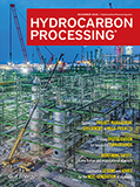June 2024
Digital Exclusive
Digital Exclusive: SPECIAL FOCUS: Digital Technologies—Utilize process simulation digital twin to optimize condensate yield
With the aim to maximize profit, and contribute to sustainability targets by reducing greenhouse gas (GHG) emissions, ADNOC Sour Gas (ASG) has optimized condensate hydrotreater operation by adjusting Reid vapor pressure (RVP), which resulted in maximizing condensate yield.
This is a preview of our premium content. Thank you for your interest—please log in or subscribe to read the full article.






Comments